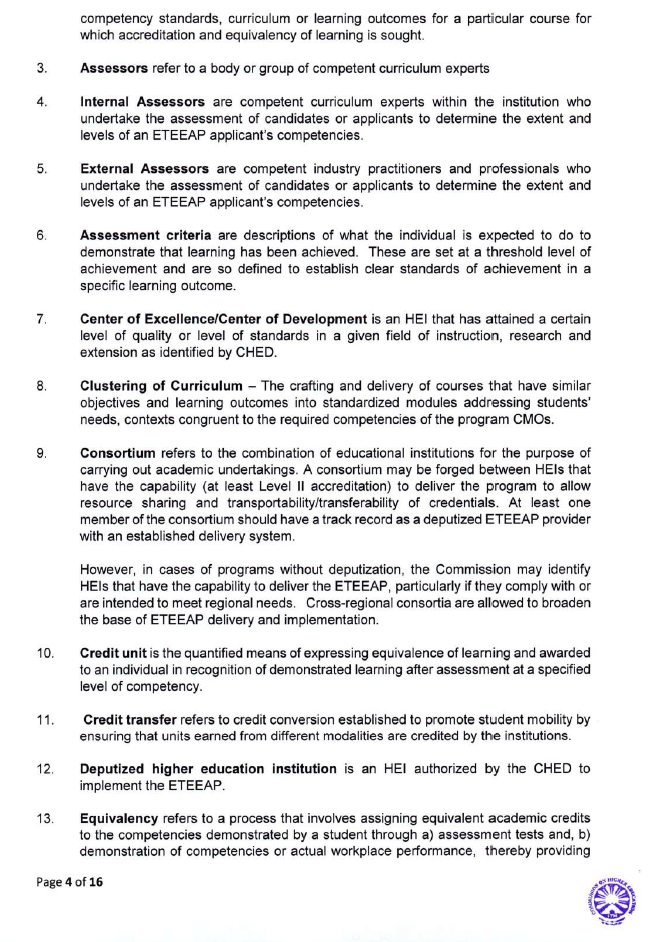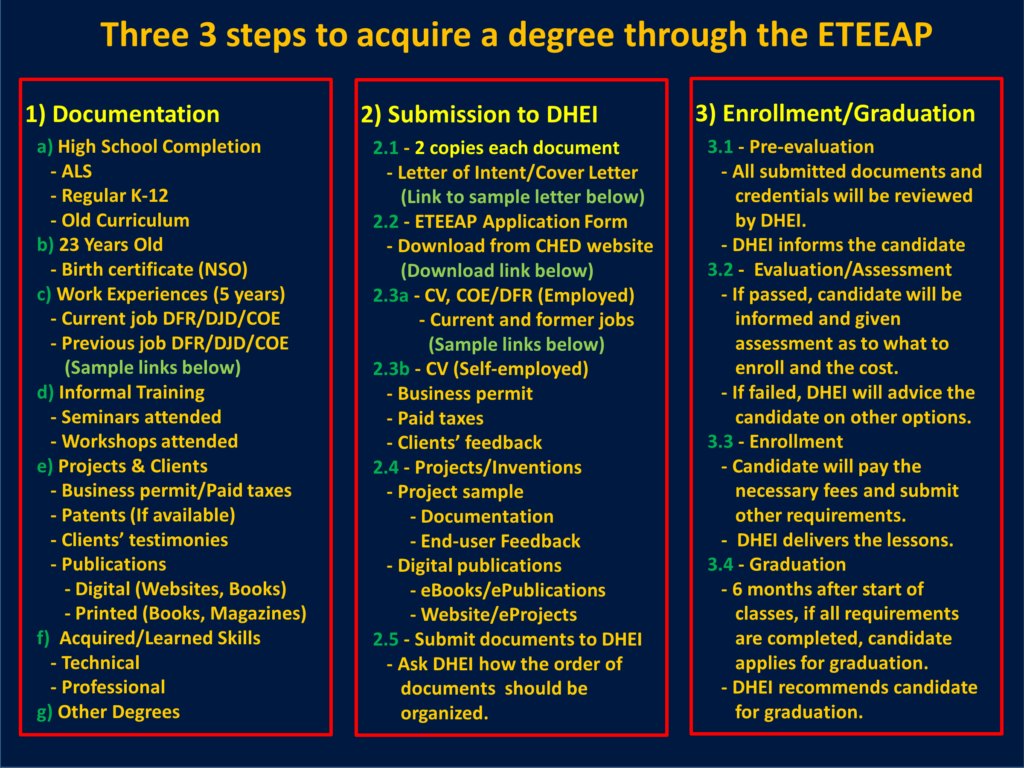To our readers and visitors:
Thank you for visiting our site and we hope the information you found are useful to you. If you have other questions on topics that were not covered by our articles, you may send them through the comment section below and we will address them.
We also answer questions of our Facebook Group members here. You can send your questions on the comments section below.
Some questions answered
(Some of the questions were taken from this source: https://www.facebook.com/groups/eteeap.org)
Is it possible na mag-submit ng docs for assessment to different schools para may back up?
– The answer is yes. Additional advise is to compile all your documents in the proper order as described on this link. An then save them into a properly labeled folder and zip the folder before sending to the schools.
If magsusubmit ba ko ng requirements, need ba physical na pupunta sa school or can I send it via email/online?
– Depende yan sa school. Karamihang schools ay ipapadala sa email ang mga document.
(Additional advise is to compile all your documents in the proper order as described on this link. An then save them into a properly labeled folder and zip the folder before sending to the schools.)
If physical kong isusubmit requirements, kelangan ba original lahat? Kasi if yes, di na ko makakapagtry sa ibang school. Okay sana kung pwede photocopies lang.
– Hindi dapat hingin ng mga school ang mga original document. Ipapakita lang yan kapag face-to-face (o sa virual) na interview na. Hindi sasagutin ng school ang document ninyong nawala sa poder nila. At kahit pananagutan pa nila yan, napakahirap kumuha uli ng kapalit.
I have one COE lang which is from my current employer and I’ve been with them for 6 years. Is that okay po?
– Yes. As long 5 years or more work experience, it is enough. Mas may advantage kung may iba pa dahil may additional points every additional year ng work experiences. Ang mga training, seminar at iba pang learning certificates ay nabibigyan din ng points sa evaluation para makompleto yung 50 or 60 points requirement na matangap sa ETEEAP.
Yung mga nag-ooffer po ng assistance for enrollment and nanghihingi ng payment agad, legit po ba sila?
– Walang initial payment na hinihingi ang mga school kapag nag-submit ng application for evaluation. Kapag approved na ay saka sila magpapadala ng evaluation form at nandoon na rin ang mga babayaran ng aplikante.
Face to face o inperson (F2F or IP) learning
– Pupunta ang estudyante sa school at doon mismo mag-aral kasabay ng iba pang mga estudyante. Ito ay tinatawag na SYNCHRONOUS LEARNING.
Online Learning
– Hindi pupunta sa school ang estudyante ngunit mag-aaral din ito kasabay ng iba sa pamamagitan ng mga online learning tools tulad ng Zoom, Google Meet at Clasroom, Messenger at iba pang virtual conference tools. Synchronous learning din ito.
Modular Learning
– Hindi pupunta sa school o sa online ang estudyante kundi matatanggap niya ang mga lesson niya sa door to door delivery, email o sa school portal at gagawin niya sa sariling schedule ang pag-aaral saka niya i-submit ang mga assignment niya sa pareho ding paraan ng pag-deliver sa kanya. Ito ay tinatawag na ASYNCHRONOUS LEARNING.
Hybrid Learning
– Ito ay anumang combination ng number F2F learning, online learning, at modular learning. Mayroong hybrid online-modular (HOM) at hybrid inperson-modular (HIM) o hybrid face-to-face and modular.
SYNCHRONOUS LEARNING – Sabay-sabay na mag-aral ang mga estudyante sa loob ng classroom o iba pang bahagi ng school campus, o sa pamamagitan ng mga virtual conference tools tulad ng Zoom, Google Meet, at Messenger.
ASYNCHRONOUS LEARNING – Hindi sabay-sabay ang pag-aaral at tatapusin ng estudyante ang mga assignment niya sa module na ipapadala sa kanya, sa pag log-in sa school portal o LMS, o sa Google Classroom ng school.
The DMMMSU focal person
– Click on this link
DMMMSU overview
– Click on this link for the information
The advantage of enrolling at state universities
– Click here for the answer
DMMMSU enrollment procedure
– Click here for the information
DMMMSU ETEEAP lesson delivery (Modular-Online)
– Click here for the information
ETEEAP graduation requirements and worksite visit
– See the discussion here
DMMMSU Graduation procedure
– See the discussion here
Ginagaya na ng ibang bansa ang ETEEAP
– Click/tap here
Are ETEEAP Graduates treated as regular students?
– Click/Tap here for the answer
Do ETEEAP students earn academic honors like regular students?
– Click/Tap here for the answer
Credit Transfer
– Click/Tap here for the answer
Oldest Graduate of DMMMSU
– 62 years old – See discussion on this link
Your may send your questions in the comment section below. Our answers could be from the information coming from the other parts or sections of this site, or we can inquire from reliable sources for accurate answers.
Thank you for your visit.
















